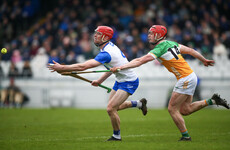What is this Tour de France of which you speak?
Quite simply it is the most famous bicycle road race in the world. A tradition since 1903 the Tour de France is a gruelling race and test of the best rider’s in the world’s endurance.
It lasts an energy-sapping three weeks and covers over a whopping 2,000 miles.
A total of 22 teams comprised of 198 riders will take part in the 2011 event, beginning Saturday. It will run until Sunday, 24 July 24 when it climaxes in Paris.
The 98th edition of the Tour de France will be made up of 21 stages and cover a total distance of 3,430.5 kilometres.
What’s the big deal?
Apart from attracting the best riders on the planet the prestige and history of the tour always attracts millions of fans along the narrow roads and sweeping mountain stages. Some of the most famous riders in history have graced the tour including such luminaries as Eddy Merckx, Bernard Hinault, Jacques Anquetil.
There was also our own Stephen Roche of course who became one of only seven people to win the tour and the Giro d’Italia in the same year.
So, how does it work?
Each day of the Tour de France is split into individual stages which form the three-week tour (apart from one or two rest days) and each cyclist’s time is recorded at the end of every part. The best or lowest aggregate time of all the entrants determines the overall winner of the tour. The rider with the lowest aggregate time at the end of each day wears the famous yellow jersey.
What’s the story with the different coloured jerseys?
The yellow jersey or maillot jaune (if you really want to impress someone) is worn by the rider with the lowest aggregate time of the race ie the fastest rider and overall race leader.
The green jersey or maillot vert is awarded for the top sprinter. The red, polka-dot jersey is given to the ‘King of the Mountains’ leader which is a competition that rewards the best climber of designated and grueling mountain stages.
Can you list some examples of unusual sounding Tour de France terms that I could use to impress my workmates?
No problem, try the following:
- Contre-la-montre is an individual time trial
- Peloton is the French word used to describe the main group of cyclists thronged together during a stage
- Breakaway refers to a group of riders who have broken away to form lead a particular stage ahead of the main chasing pack of riders or peloton.
- Bonking refers to a rider who has completely run out of glycogen, the carbohydrate that fuels the muscles
Ger McCarthy is author of the book entitled Off Centre Circle about a lifetime spent toiling in the amateur soccer leagues of West Cork. He is a regular contributor to the Irish Examiner, Setanta Sports, NewsTalk, BackPageFootball and Shoot! Magazine web sites and columnist with the Evening Echo and Southern Star Newspapers in Ireland.











I don’t think I’ve ever run out of glycogen while bonking…
Don’t forget the doping!
I love a good ride so I do.
Did we forget to mention lance in the greatest line up !!!!!!!!
Shame on ye !!!!!!!!!!
You’ve missed the fact that Sean Kelly won the maillot vert four times!